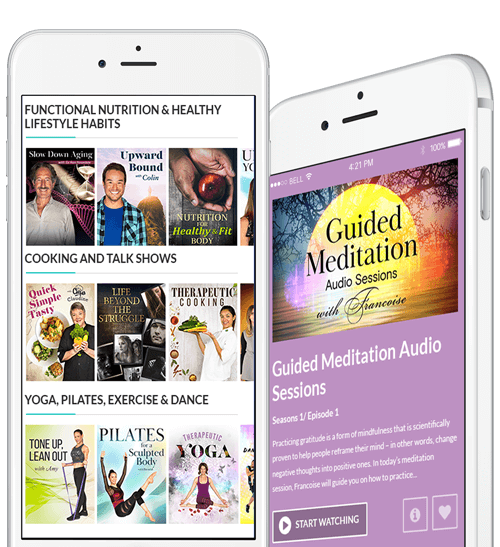The Sugar Detox Challenge: 10g for 10 days
Home
 Blog
Blog
 Nutrition
Nutrition
 Eating Behaviors
Eating Behaviors
 The Sugar Detox Challenge: 10g for 10 days
The Sugar Detox Challenge: 10g for 10 days

Before you can start any type of body transformation, you need to reset our organism so that it is receptive to the change that is about to occur. And the focus here is on overcoming the addiction to food by eliminating processed sugar from your daily diet for the next 10 days. In order to understand how sugar – a fast carbohydrate – affects your body you need to learn about the role of insulin as a ‘fat storage’ hormone. Insulin is a hormone that is produced in the pancreas and released into the bloodstream when sugar enters your body. High amount of processed sugar increases our blood sugar levels, which in turn increases the production of insulin. Since processed sugar is fast carbohydrate, the blood sugar levels go up and down very quickly. Even though the insulin level can go up quickly, it cannot follow the quick decrease of the blood sugar levels, so it remains high and active in the blood for a longer period of time. The active insulin further reduces the blood sugar levels, which leads to a strong desire to eat more foods with high sugar value. The consumption of more sugar increases again the blood sugar levels, continuing the cycle infinitely, and hence an addiction to high sugar foods is developed. At the same time, the extra calories that you consume with each sugar portion – that are not burned as energy – are stored in your body by the insulin as ‘reserve energy’ in the form of body fat.

The insulin levels rise up together with the blood sugar levels as it has the critical role to keep the blood sugar below a level of 7.7 mmol/l, as levels above that threshold are becoming toxic for our body. During the consumption of fast carbohydrates, the insulin levels cannot go down as fast as the blood sugar levels do, not because this a malfunction of our body design, but because our bodies were never created with the idea to consume the excessive amounts of fast sugars that we do nowadays. Our bodies cannot adapt to the sugar abuse that they have been subject to for the past century or so.
Note the difference in the scenario when you are biking all day long and you eat a lot of chocolate or muffins. In that case, all extra calories that you consume with sugar will be turned by the insulin into energy to support the physical effort. Nothing will get stored as fat. However, this is not the case with most of us eating fast carbs while sitting on the couch or in front of the PC.

In order to break the ‘addictive cycle of sugar,’ we challenge you to reduce the consumption of sugar, in the form of fast carbohydrate (pure sugar, soda, candies, ice-cream, muffins, etc.), for 10 days to less than 10 grams a day.

However, what makes this challenge particularly interesting, and even educational, is that cane sugar, which you should avoid, may be hidden in places that you would never expect. If you start reading food labels you may be surprised to find that sugar is added to almost every processed product on the market nowadays. Bread (whole wheat, white, multi-grain), tomato sauce, canned corn are just a few examples of foods that may contain added sugar that accumulates and counts in your daily sugar intake. Be smart with the products you choose – they may look healthy and organic, but may still contain hidden sugars.
What carbs you can consume?
During the next 10 days you are allowed to consume slowly absorbed carbohydrates. This includes most fruits and vegetables as they contain fiber that slows the entry of sugar into our blood. However, please note that fruit juices without the fiber are considered fast carbs too – remember that if you remove the fiber from the fruit, the fruit juice you drink is the same as soda. Other slowly absorbed carbs are brown rice, lentils, oatmeal (not instant), whole wheat bread (no sugar added), whole wheat pasta (no sugar added) and all foods rich in starch (no sugar added).
In regards to your sugar consumption going forward after you complete the challenge, experts advise that it should not be more than 10% of your daily calorie intake. On a 1500 calorie diet you should be taking no more than 150 calories from sugar which is about 37g of sugar or about 9 teaspoons a day (1g of sugar = 4 cal).
Get FREE Access!
We are on a mission to change your life by providing you with curated science-backed health tips, nutrition advice and mouth-watering recipes. Sign up to receive your 3 starter gifts and get exclusive access to new weekly content for FREE:

Free eBook
to boost metabolism

4 Shopping Guides
for every diet

22 Free Recipes
to beat sugar addiction

Subscribe now
However, it doesn’t mean that if you eat 9 teaspoons of pure sugar every day you will be fine. Don’t forget to get your daily sugar intake from slowly absorbed carb foods mainly as the sugar in them enters the bloodstream slowly and your body has a greater chance to make use of those calories, which means more of them will be burned and less will be stored as fat.
Sugar substitution: Try liquid stevia drops to sweeten drinks and food. Stevia is a remarkable herb that helps maintain normal blood sugar levels in healthy individuals, has zero sugar content and zero calories.
Once you complete the 10-day challenge, your body will be ready to incorporate the actions from your personalized program that you can generate on ZONIA.
Let’s Get Started!
To generate your personalized 8-week program with a daily action, join ZONIA video streaming for free today!

We created ZONIA because we believe that everyone deserves to be empowered with the education and tools to be healthy and happy. Zonia's original videos and personalized transformation programs by our health & wellness experts will help you achieve this mission. Click on the button below to get started today:















